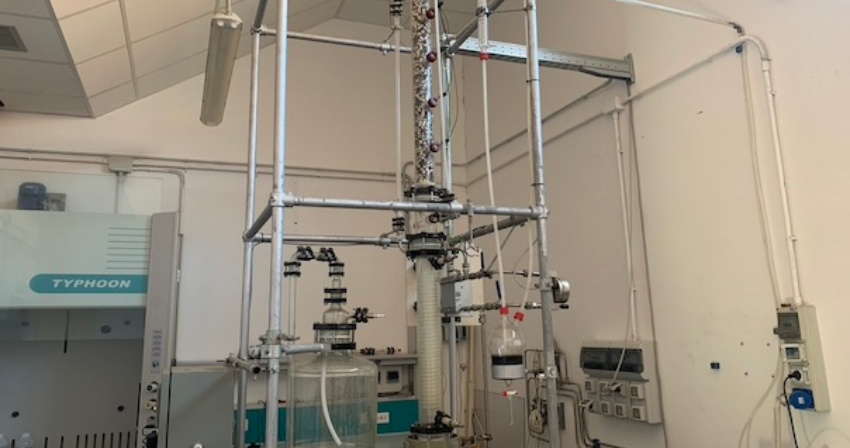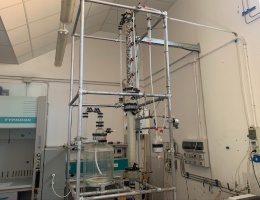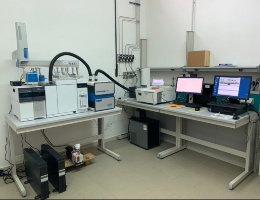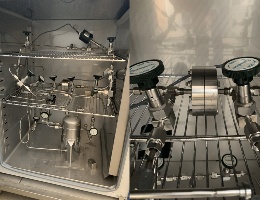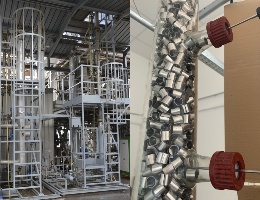CO2 separation technologies
Research line developed within the CEEP (Centro Eccellenza Energia Pulita) project on the topic of low-carbon energy production.
Date:
03 August 2021
In general terms, CO2 separation technologies are classified (somewhat loosely and certainly not exhaustively) based on the broad configuration of the plant for which they are intended or into which they are integrated. For example, applications to conventional thermal power plants are referred to as post-combustion separation, as CO2 is separated from the flue gases produced by combustion. On the other hand, in the case of applications to gasification plants, one speaks of pre-combustion separation, since the CO2 is separated from the synthesis gas before it is sent to the combustion and power generation system (generally, for large-scale applications, consisting of a combined cycle). Finally, in plants where combustion is carried out with almost pure oxygen, the combustion products consist almost exclusively of CO2 and water, the latter being separable by condensation: in this case we speak of oxy-combustion.
The CO2 separation process, regardless of the approach adopted (pre-, post- or oxy-combustion) is strongly conditioned by the characteristics of the primary fuel and the conversion process to which it is subjected. An experimental characterisation analysis of some fuel types (initially coals and subsequently biomass) was conducted at Sotacarbo laboratories to assess their kinetic behaviour during combustion, oxy-combustion and pyrolysis.
In relation to post-combustion applications, studies were conducted on CO2 separation processes with advanced membrane systems. This research led to the construction of a bench system for the experimental development of membranes at the Sotacarbo Research Centre laboratories.
The most widely used plant-based technologies for the chemical absorption of carbon dioxide from fume (post-combustion separation) are those based on amines and in particular monoethanolamine (MEA). But such systems, especially when integrated into the industrial processes of thermal power plants, require high energy expenditure for solvent regeneration. The experimental activity conducted by Sotacarbo in this sense concerns both the study of carbon dioxide absorption with MEA through the use of catalysts to minimize the energy load in the phase of regeneration of the exhausted solvent, the performance of non-conventional solvents, alternatives to amines, such as aqueous solutions of amino acid salts. The first activity is conducted at the absorption/regeneration plant of the pilot platform, the second using the GAIA bench-top plant.
The activities conducted as part of the present study are:
Separazione della CO2 con membrane
Assorbimento della CO2 con solventi a base di sali di amminoacidi
Rigenerazione catalitica dei solventi per l’assorbimento della CO2
Caratterizzazione di sorbenti per l’adsorbimento della CO2
Analisi termica e cinetica dei combustibili
SCIENTIFIC PUBLICATIONS
Below the papers published in international scientific journals produced as a result of the research activities of this line:
- Luca Olivieri, Silvia Meneguzzo, Simone Ligi, Andrea Saccani, Loris Giorgini, Alessandro Orsini, Alberto Pettinau, Maria Grazia De Angelis. Reducing ageing of thin PTMSP films by incorporating graphene and graphene oxide: effect of thickness, gas type and temperature. Journal of Membrane Science 2018; 555:258-267.
- Javier Fermoso, T. Corbet, Francesca Ferrara, Alberto Pettinau, Enrico Maggio, Aimaro Sanna. Synergistic effects during the co-pyrolysis and co-gasification of high volatile bituminous coal with microalgae. Energy Conversion and Management 2018; 164:299-409.
- Antonio Conversano, Andrea Porcu, Mauro Mureddu, Alberto Pettinau, Manuele Gatti. Bench-scale experimental tests and data analysis on CO2 capture with potassium prolinate solutions for combined cycle decarbonization. International Journal of Greenhouse Gas Control 2020; 93:102881.
- Fereshteh Hojatisaeidi, Mauro Mureddu, Federica Dessì, Geraldine Durand, Basudeb Saha. Metal‐free modified boron nitride for enhanced CO2 capture. Energies 2020; 13:549.
- Francesco M. Benedetti, Maria Grazia De Angelis, Micaela Degli Esposti, Paola Fabbri, Alice Masili, Alessandro Orsini, Alberto Pettinau. Enhancing the separation performance of glassy PPO with the addition of a molecular sieve (ZIF-8): gas transport at various temperatures. Membranes 2020; 10:56.
- Muhammad Azam Saeed, Muhammad Farooq, Aneela Anwar, Muhammad Mujtaba Abbas, Manzoore Elahi M. Soudagar, Farrukh A. Siddiqui, Muhammad Ali Shakir, Abdul-Sattar Nizami, Ijaz Ahmad Chaudhry, Alberto Pettinau, Gordon E. Andrews, Herodotos N. Phylaktou. Flame propagation and burning characteristics of pulverized biomass for sustainable biofuel. Biomass Conversion and Biorefinery 2020; https://soi.org/10.1007/s13399-020-00875-y.
- Federica Dessì, Mauro Mureddu, Francesca Ferrara, Javier Fermoso, Alessandro Orsini, Aimaro Sanna, Alberto Pettinau. Thermogravimetric characterisation and kinetic analysis of Nannochloropsis sp. and Tetraselmis sp. microalgae for pyrolysis, combustion and oxy-combustion. Energy 2021; 217:119394.
Last update
09/12/2024, 17:39

